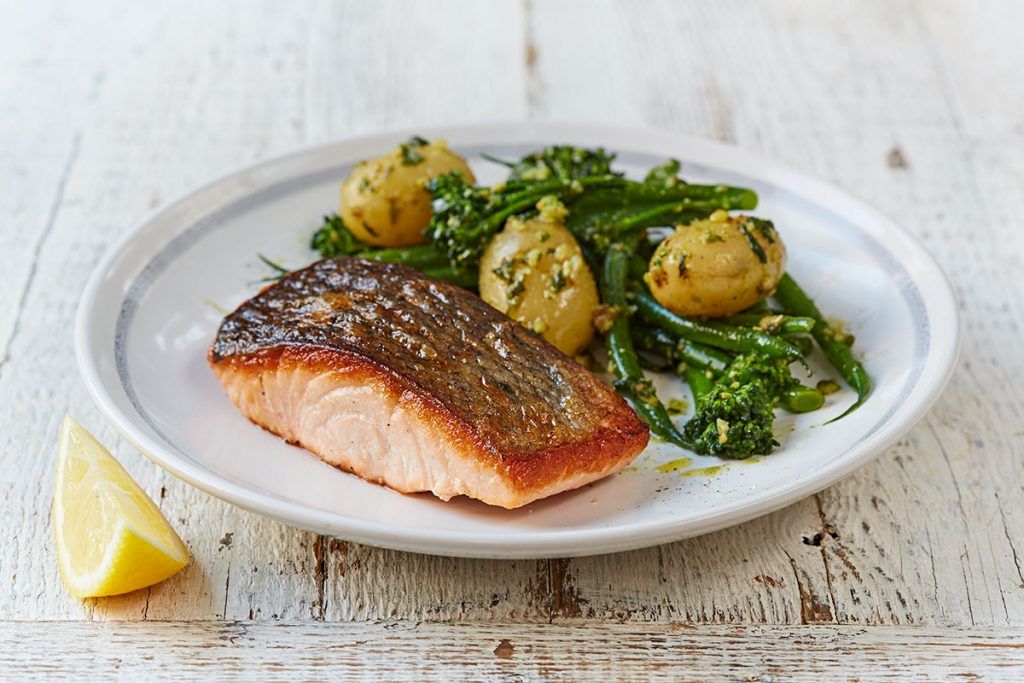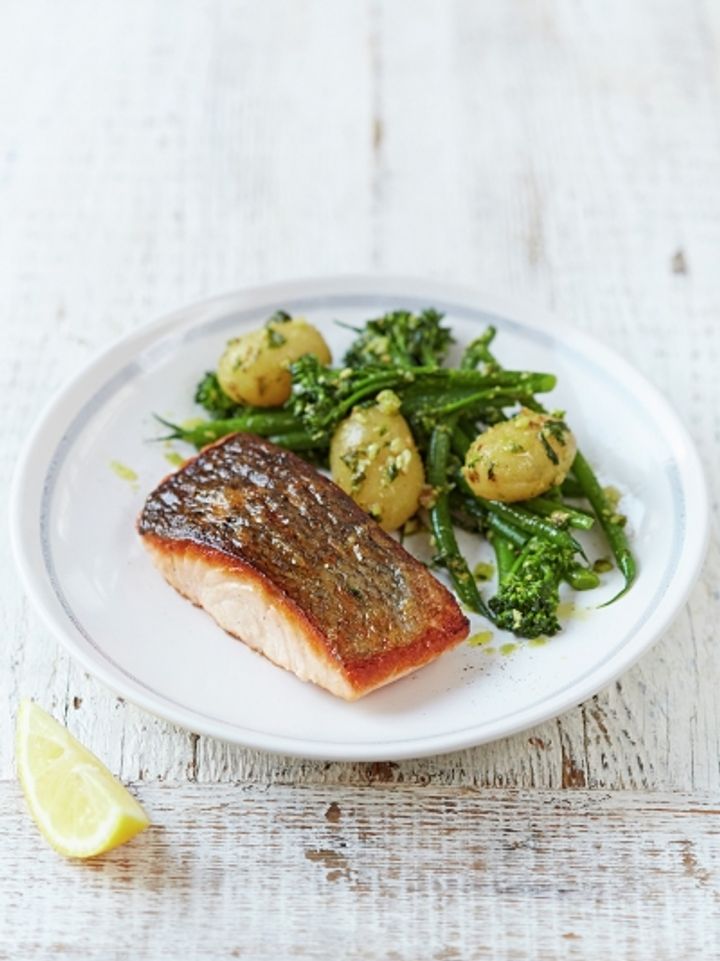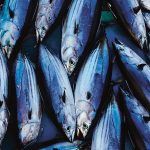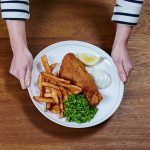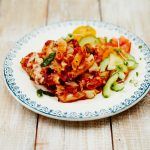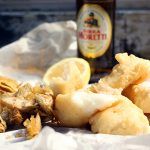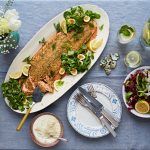In the UK today, a huge amount of the animal and seafood products we consume are farmed. It’s worth remembering that farming of anything is not exactly natural. It’s what we’ve done in order to organise our food production and produce it in volumes and formats that work with the way we now purchase and consume our food. This feature explains how farming is applied to fish, and explores the positives and negatives of this practice.
Why does it happen?
In some parts of the world, wild food is still the primary source. However, in the developed world this is becoming less and less common. Often some wild berries, mushrooms, or perhaps rabbit or venison might be the only ‘wild’ foods we expect to see on a menu. We accept the fact that our beef, chicken, pork, dairy, fruit, veg, cereals and more all come from farmed sources. Our seafood, however, usually comes from a mix of both wild and farmed sources.
As the global population increases, so does the demand for tasty, nutritious and affordable protein. We are all familiar with the terms ‘overfishing’, ‘endangered’ and ‘unsustainable’ being used to describe the state of our oceans. And it is true that over the years, many of our oceans have been abused, which has led to a decline in the wild populations of some species.
To help tackle overfishing, there are now numerous schemes in place to help consumers choose wild fish from sustainable sources. The best known of these is the Marine Stewardship Council, or MSC. However, despite the successes of these schemes, pressure on our oceans and wild fish stocks continues to be an issue, in part due to our dependence on our favourite wild fish: cod, haddock and tuna.
In recent decades, another type of seafood production has seen a steady incline – farming, otherwise known as aquaculture. The farming of seafood products is nothing new, but it is going through a period of enormous growth, and developments in the methods and technology used is having a huge impact on its sustainability.
How much of our fish is farmed?
The most common farmed seafood we consume includes salmon, trout, sea bass, bream, pangasius (often labelled basa or river cobbler) and prawns. Today, in the developed world, it is thought that around half of all the fish we consume is from farmed sources. Certainly, in a UK supermarket or on a restaurant menu, the vast majority of salmon will be farmed. Wild salmon is much less accessible and comes with a substantial price premium.
What does farming fish involve?
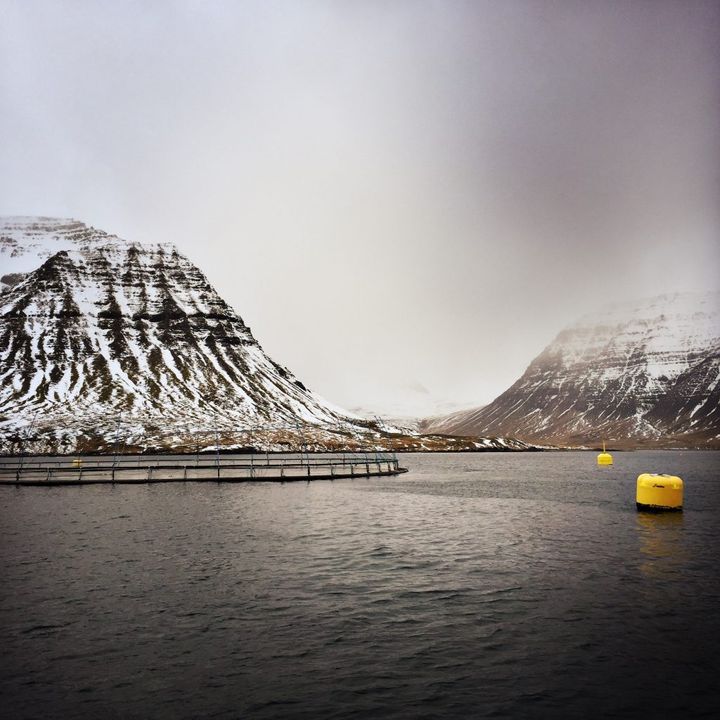
In the main, the process is as follows:
- Parent fish stock are selectively bred, to produce the fish best suited for farming.
- Fish eggs are hatched in small tanks. When they’re big enough, they’re moved to larger tanks where they are fed and monitored.
- When they are around 150g in weight, they are moved either to large ponds, or netted areas in the sea, such as the one pictured above.
- From here, they are fed concentrated fish feed, until they reach the desired weight. During this time, their health is closely monitored, often using underwater cameras.
- Once they reach the desired weight, they are transferred to processing factories where they are killed, gutted and packed.
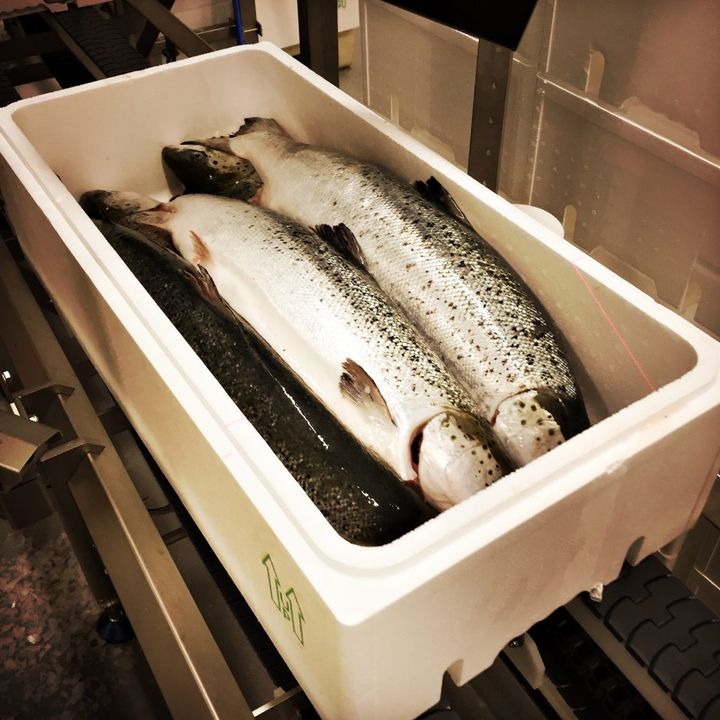
Is all fish farmed the same?
As with all farming, no two farms are ever the same. Every farm will vary in its standard of animal welfare, environmental impact and sustainability. We are well used to seeing choice when buying products such as eggs, chicken and pork; with options such as Red Tractor, RSPCA Approved, free-range and organic all being available. However, this level of choice is not yet present in farmed fish in the same way.
Despite the lack of obvious choice when buying farmed fish such as salmon, there are many schemes behind the scenes that are tackling the various issues. These include:
- RSPCA Assured – Focused primarily on the welfare of the fish
- GlobalG.A.P. – Focused on food safety, ethics and traceability
- Best Aquaculture Practices and Aquaculture Stewardship Council – All-round programmes aiming to improve environmental impact, sustainability and food safety
- Soil Association / Organic – Focused largely on environmental impact and organic farming principles
Many UK retailers are adopting one or more of these schemes as a method of tackling the issues around responsible production systems.
How sustainable is it?
The farming of salmon on a large scale is a relatively new industry, which has boomed in the past few decades. This sudden boom has perhaps outrun the ability to fully understand its impact on the environment, sustainability and human health.
In previous years, the industry made many mistakes which caused damage to its reputation. These included the escaping of fish, which caused problems when they then bred with wild populations, the polluting of seas and waterways, use of unsustainable fish feed, overuse of drugs to treat health issues in stocks, and the questionable use of chemicals.
Whilst the industry as a whole is still not perfect, it has learnt from the mistakes of the past and gone through enormous change. Technology has played a huge part in improving sustainability, by enabling farmers to monitor fish behaviour, capture data on environmental impact and use robotics to ensure feeding levels and oxygen levels in the water are optimal.
Further work is still needed to better manage impact on the wild fish stocks in surrounding areas, as this is frequently one of the hidden impacts of this production. It is commonly thought that “inland” ponds can offer more sustainable environments for fish to be produced.
One of the key factors affecting the sustainability of farmed fish is the feed that’s used. Fish such as salmon naturally feed on smaller fish. Therefore, a large percentage of the feed given to farmed salmon is made up of fish protein and fish oil. These fish components will come from wild fish, so this needs to be from sustainable sources to ensure the farmed salmon is, in turn, sustainable itself. As technology and science continue to develop, the ratio of marine ingredients in salmon feed is continually being improved, to help the conversion of wild fish into farmed fish become more efficient. The fact remains that we have a much larger demand for salmon than we do for the small wild fish that go into its feed.
So what should I buy?
The key to a responsible diet is always to eat a wide variety of foods, from responsible sources. We would always recommend varying the fish and seafood you consume, not always demanding the same species.
When buying a farmed fish product such as salmon, trout or prawns, it is recommended to buy from a trusted supplier and ask whether it is from a certified source. Some supermarkets have a policy of ensuring all their salmon carries a certification, such as RSPCA Approved.
At Jamie Oliver, for our restaurants and our products, we always buy from sources that we’ve either assessed ourselves, or that are certified through one of our recognised schemes.
